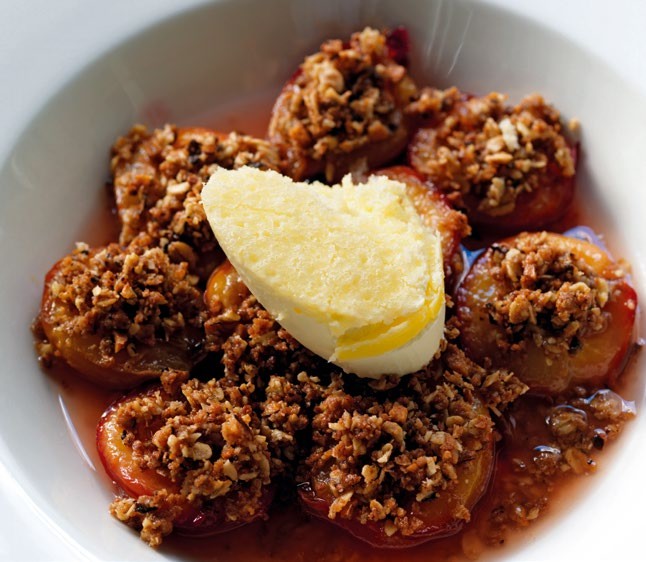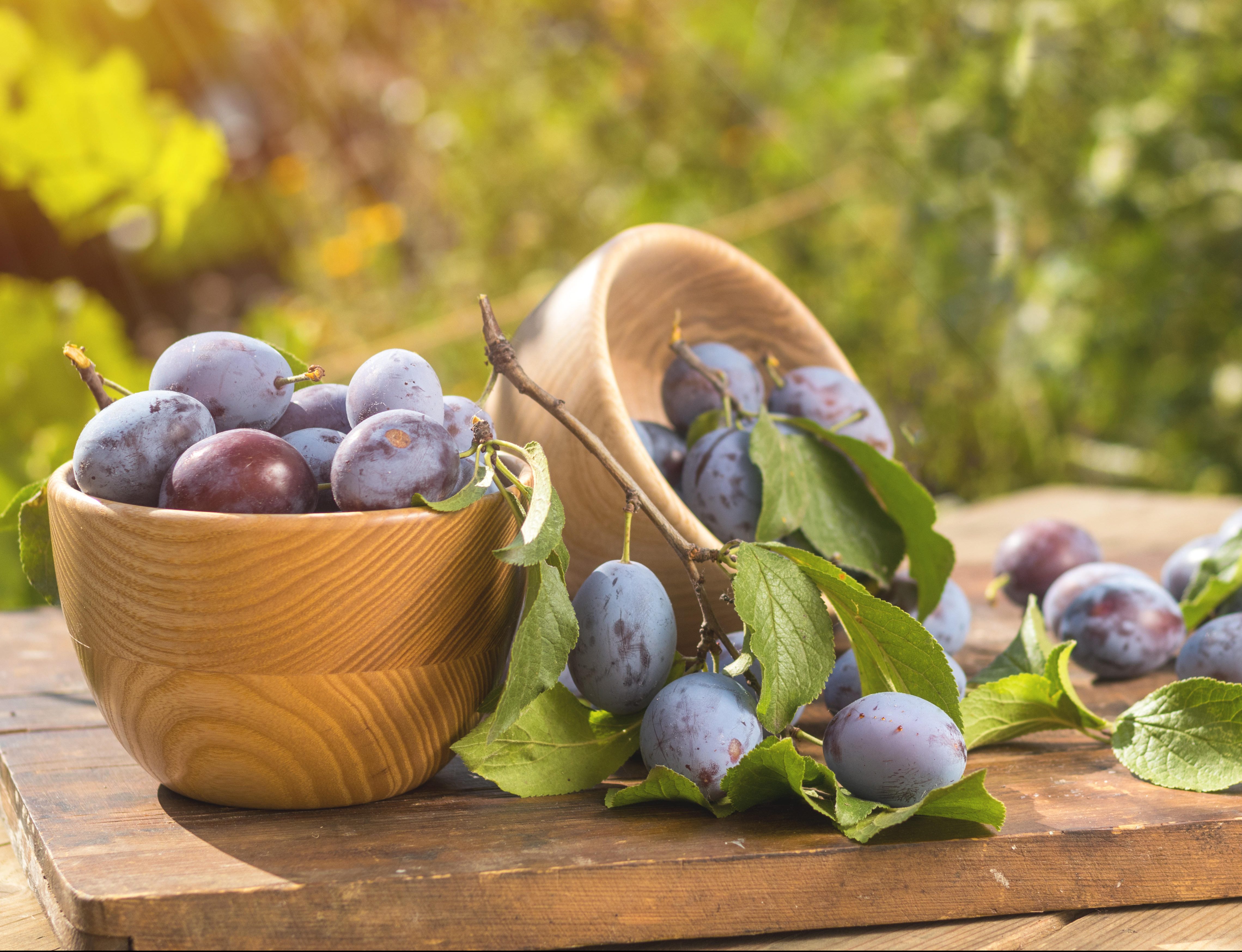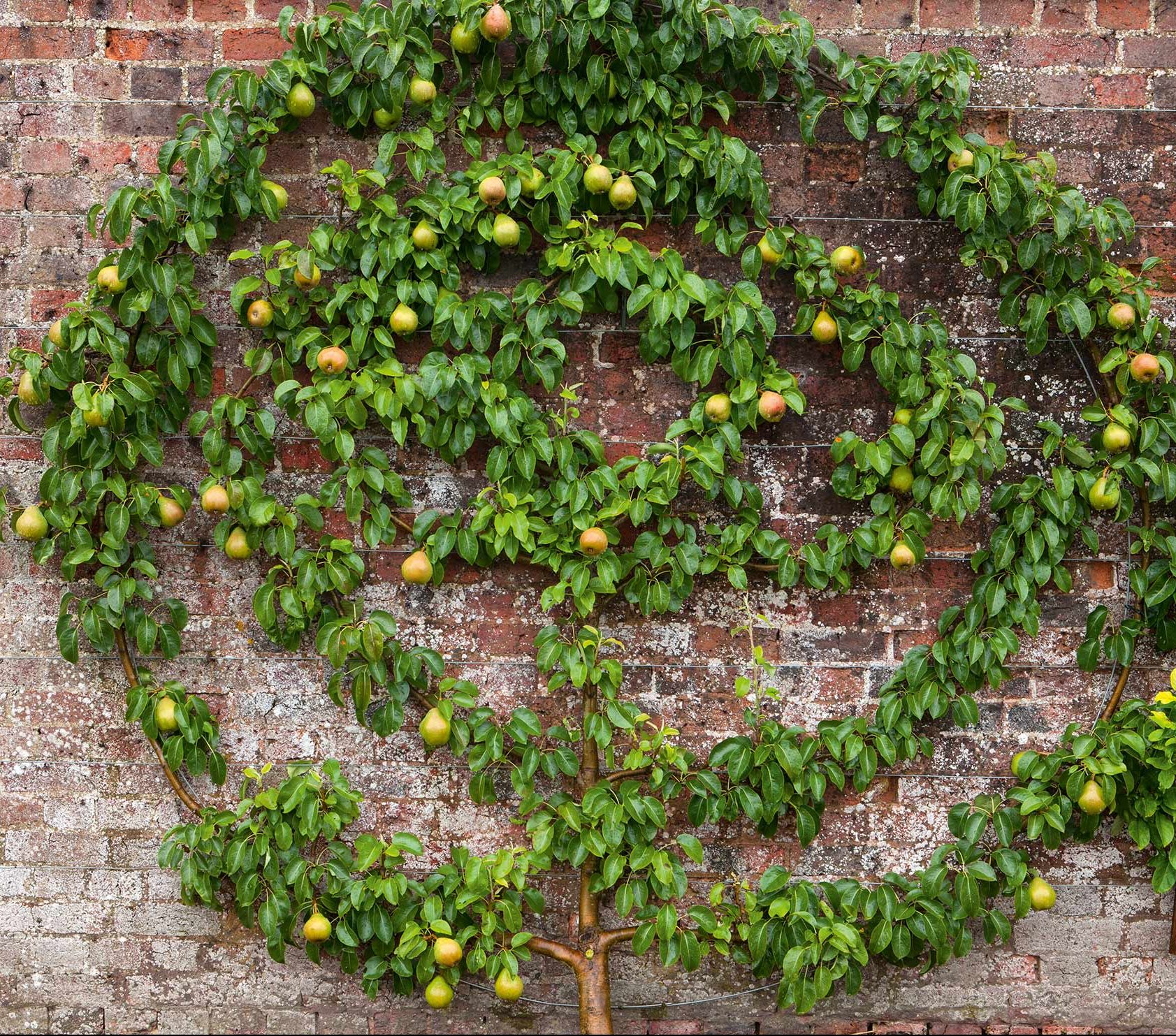The story of the Victoria plum, and how to serve them roast with nuts and cream
Tom Parker-Bowles on delight of the perfect plum, and a recipe that lets them shine.


'There is something rather bewildering about plums,’ writes Christopher Stocks in the excellent Forgotten Fruits. Although, initially, I wasn’t exactly sure why.
They don’t stink of death and fetid drains, like the durian. Nor, unlike the kiwano melon, do they have the texture of cucumber and taste of banana. There’s certainly nothing perplexing about their flavour, which moves from the mouth-puckeringly sour to the lusciously and lasciviously sweet. Nor their colour, deep black to virgin white, with every shade in between.
No, as Mr Stocks explains, it’s simply a matter of nomenclature: ‘Apples are always called apples, although they come in many different forms. A plum, by contrast, can certainly be a plum, but it can also be a damson, a bullace, a greengage or a Mirabelle.’ Their ancestry may be ‘complex’, their history ‘convoluted’, but the ‘real nightmare lies in the names of this fruit’.
He’s not wrong. Plums have been cultivated for more than 2,000 years in Europe and Asia and probably came to Britain with the Romans — although possibly before, as plum stones have been discovered during the archaeological excavation of Maiden Castle, an Iron Age hill fort in Dorset. The best known are Prunus domestica, or the large ‘European’ plum, which are the blessed hybrids of the sloe (P. spinosa, not considered a plum) and the cherry plum (P. cerasifera). That first union happened naturally, somewhere around the foothills of the Caucasus mountains, in the Russian republic of Adygea.
There is not only the ‘Victoria’ plum, but the small and super-sour bullace; the ‘Mirabelle’, mostly used for jams and brandy; and the damson, which comes from Damascus and arrived in Europe with the Crusaders. The greengage, with its heaven-scented flesh, is another member of the same family and a plum that connoisseurs rate as best of the lot.
But it’s the ‘Victoria’ plum, named after the eponymous queen, that’s the most ubiquitous of all.

With its suitably regal purple skin and mellow yellow flesh, the fruit played a bittersweet role in my childhood. There was the greedy anticipation of picking those plump orbs off the trees in the cool orchard behind the pool. We devoured them by the fistful, together with delicately ephemeral greengages, spitting their rough stones high into the air. Yet there was danger, too, and the painful memory of bare feet, rotting fruit and feasting wasps — or, worse still, biting into the plum only to find one was sharing a mouthful with an indignant stinger. You couldn’t use Wasp-Eze on a tongue.
Exquisite houses, the beauty of Nature, and how to get the most from your life, straight to your inbox.
I always thought the ‘Victoria’ plum a thoroughly decent fruit, made all the sweeter by the story of her birth — found, by chance, sometime during the mid 19th century, in a cottage garden in the Sussex village of Alderton. Once discovered, a cutting was sold to a Brixton nurseryman called Denyer, who, in 1840, formally introduced her to the world. ‘Victoria’ swiftly became plum regina — but that romantic tale is simply not true. Mainly because there is not, and never has been, a village called Alderton in Sussex.
It is, however, a common Sussex surname, so the fruit may have been named after the person who first found it. Another explanation is that she was picked in Walderton, a genuine Sussex village, and lost that first letter somewhere along the way. Most worrying of all is that this British classic may, in fact, be French — a royal dauphin that had been around for years and was simply ‘an old variety with a new name’. Whatever the truth, she still rules triumphant.
Not all were enamoured by her flavour. ‘The Victoria plum is a very Victorian plum,’ thundered Shand, ‘plump, pompous, portentous and pretentious.’ Oh dear. Even Jane Grigson, who was rather more measured in her views, thought that ‘the apotheosis of a long reign is flood of bland, boring plums'.
OK, so she may not have the transcendental allure of ‘Coe’s Golden Drop’ or ‘Bryanston Gage’, but give the poor girl a break. What both Shand and Grigson do not acknowledge is that the ‘Victoria’ was primarily a cooking plum and one that not only retains her colour with heat, but develops a deeper flavour, too. When it came to jam, plum was the cheapest and most popular flavour of them all.
Recipe: Roast plums with cobnuts and clotted cream
This comes from Hix Oyster & Chop House by Mark Hix. If you can’t find cobnuts, substitute hazelnuts instead.
Ingredients
- 12–18 ‘Victoria’ or other plums, depending on size
- 6tbspn caster sugar
- 2tbspn plain flour
- 40g hard butter, chopped into small pieces
- ½tbspn brown sugar
- 4tbspn oats
- 24–30 cobnuts, shelled and roughly chopped
- Clotted cream or thick Jersey cream
Method
Preheat the oven to 200˚C/400˚F/ gas mark 6. First, make the topping: put the flour and butter into a bowl and rub together with your fingers to a breadcrumb-like consistency. Stir in the brown sugar, then mix in the oats and cobnuts. Spread out on a baking tray.
Halve the plums, place cut-side up on another baking tray and sprinkle with the caster sugar.
Place both of the trays in the oven and bake for 15–20 minutes until the plums are lightly coloured and softened and the topping is golden; you may need to take the topping out before the plums.
Leave the plums to cool slightly, then transfer them to individual serving bowls and spoon over the cooking juices. Scatter over the cobnut topping and finish with a generous dollop of cream.

Plums to grow, plums to show, and plums to pop in your gin
Mark Diacono picks his favourite plums — and their close relatives, damsons, mirabelles, bullaces and gages.

What you need to know about training fruit trees, from fans and spirals to arches, palmettes and beyond
Trained fruit trees are beautiful as well as bounteous. Mark Diacono explains what you need to know if you wish
Tom Parker Bowles is food writer, critic and regular contributor to Country Life.
